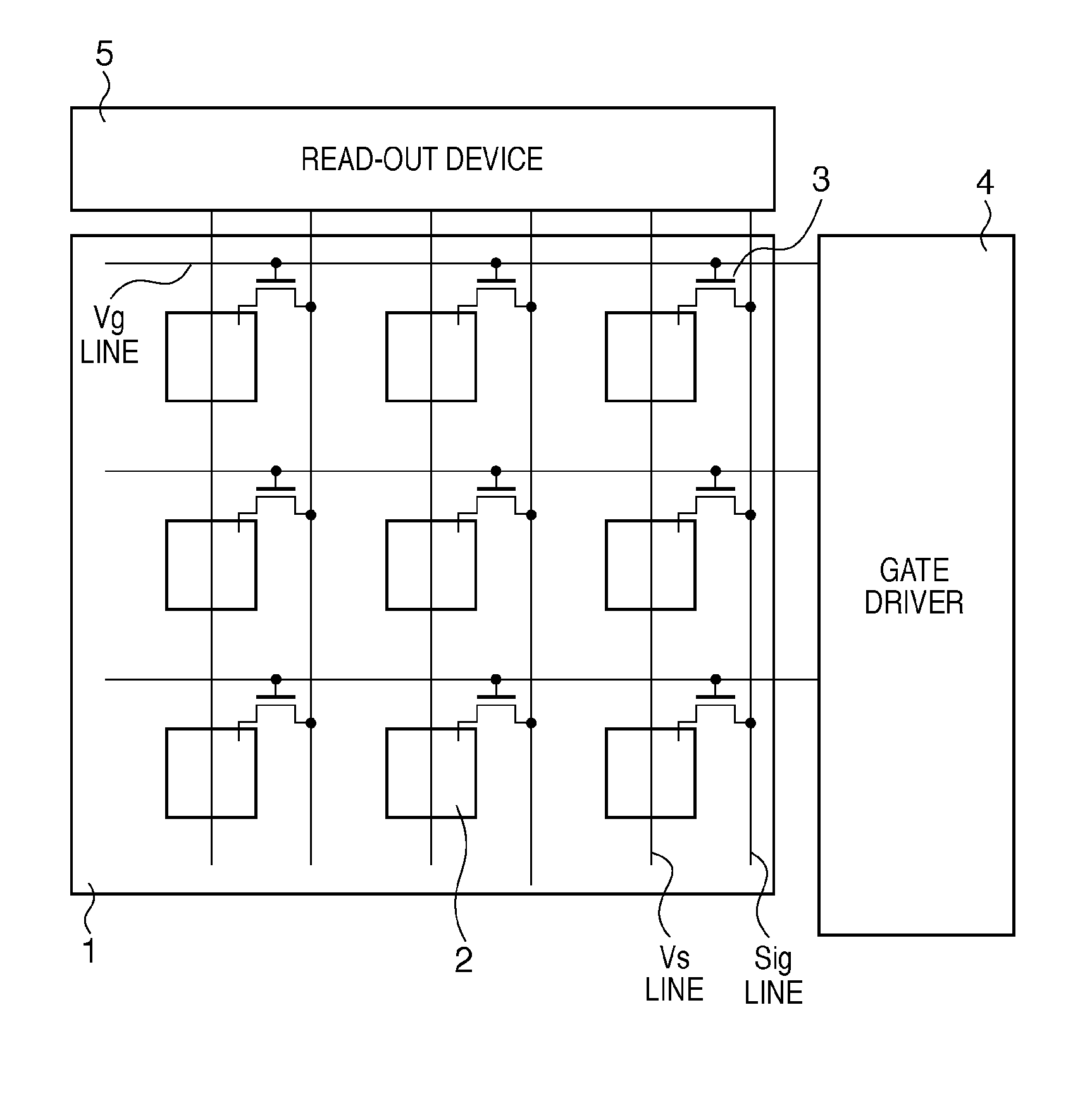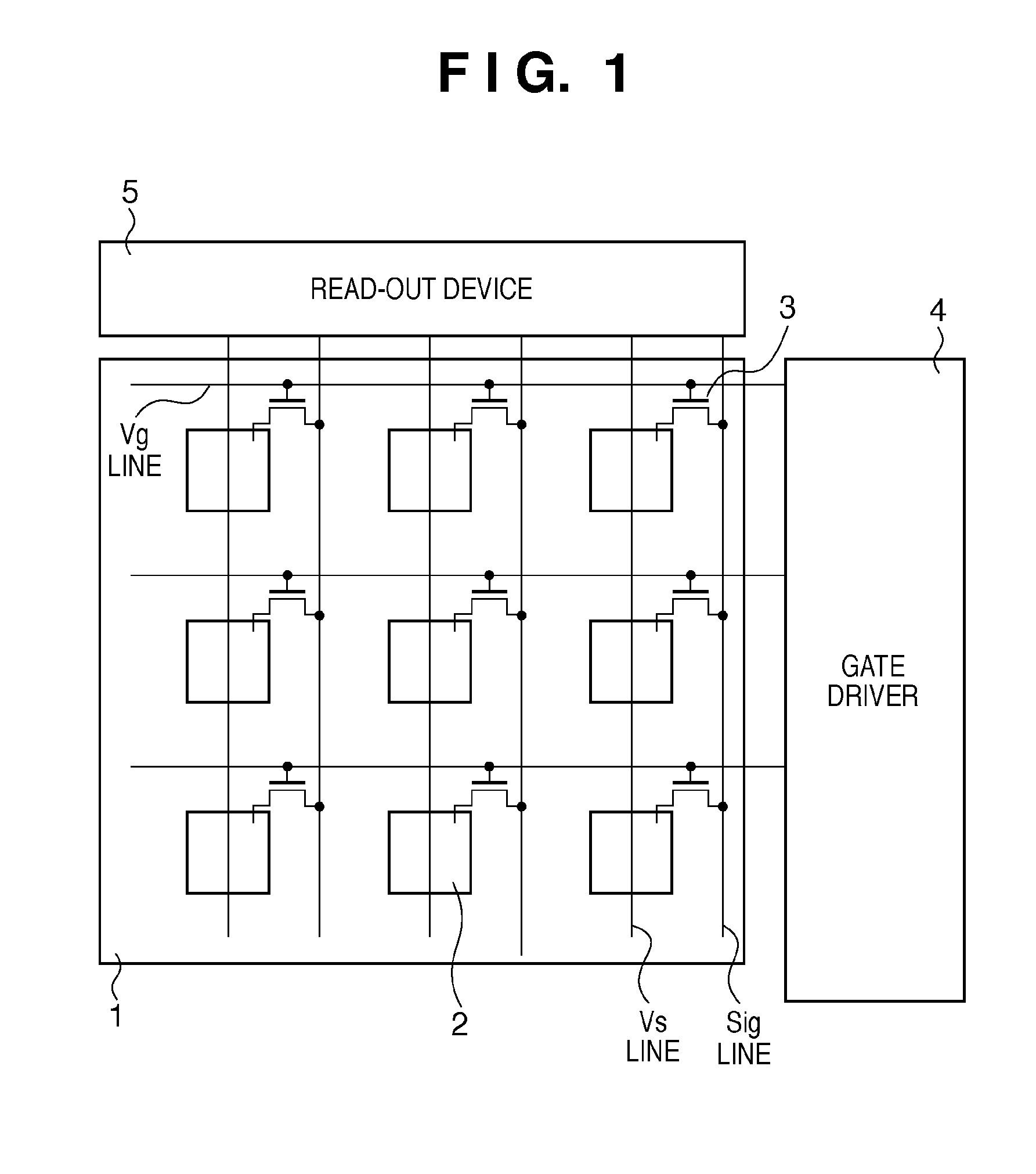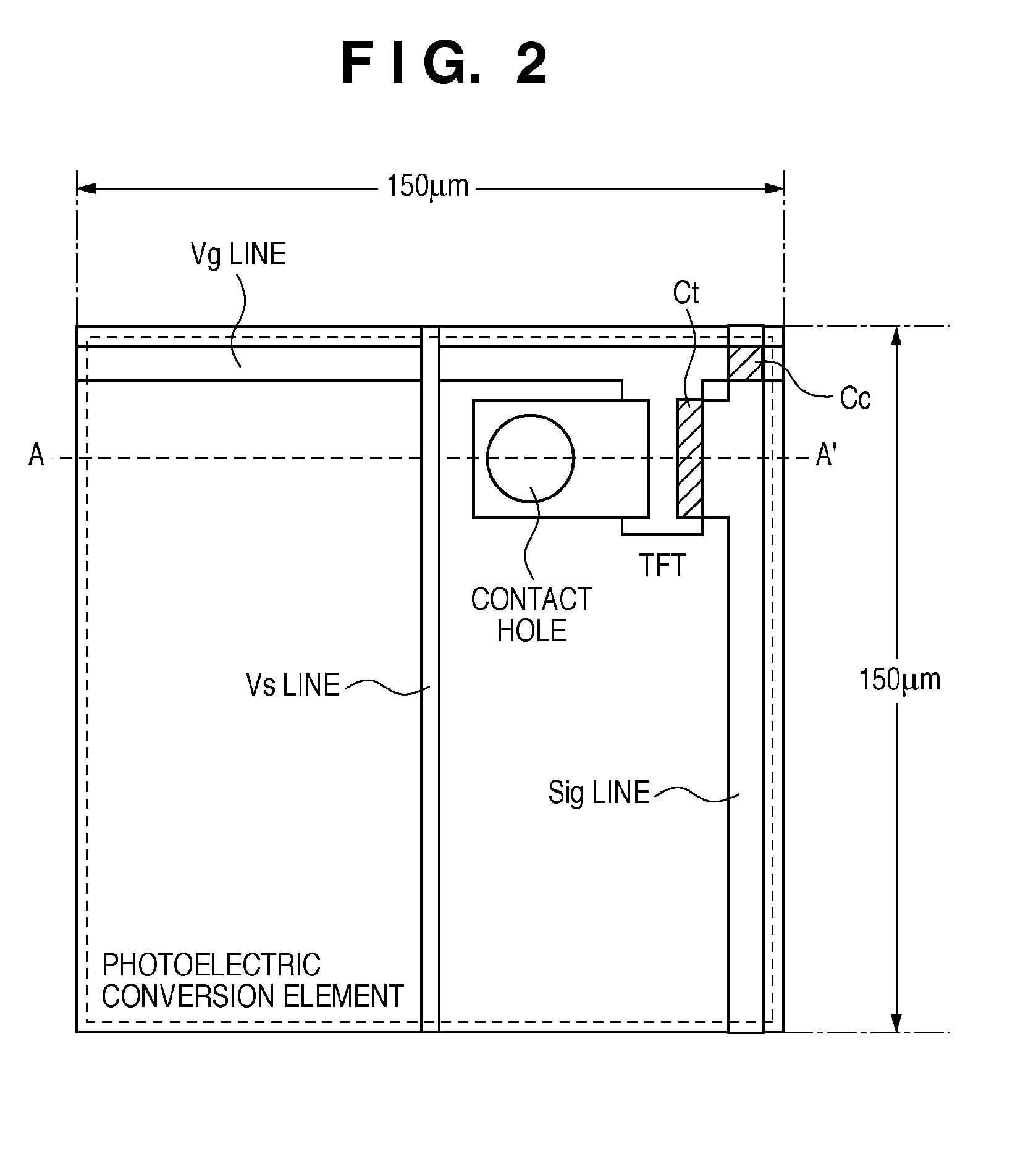Radiation detection apparatus and radiographic imaging system
a detection apparatus and radiographic imaging technology, applied in the direction of x/gamma/cosmic radiation measurement, instruments, radiofrequency controlled devices, etc., can solve the problems of increasing noise, deteriorating quality, increasing noise, etc., and achieve satisfactory image and reduce unevenness.
- Summary
- Abstract
- Description
- Claims
- Application Information
AI Technical Summary
Benefits of technology
Problems solved by technology
Method used
Image
Examples
first embodiment
[0027]FIG. 1 is a circuit diagram showing the circuitry of a radiation detection apparatus according to the first embodiment of the present invention. FIG. 2 is a plan view showing one pixel. FIG. 3 is a sectional view taken along a line A-A′ in FIG. 2. FIG. 4 is a correlation graph showing the relationships between the thickness of an interlayer insulation film and the capacitances added to a signal line. FIG. 5 is a sectional view showing a contact hole to connect a conversion element and a switching element.
[0028]As shown in FIG. 1, a plurality of pixels each including a conversion element 2 and switching element 3 are arrayed in a matrix in a radiation detection panel 1 serving as a radiation detection apparatus. An MIS type photoelectric conversion element, for example, is used as the conversion element 2. The switching element 3 is a signal transfer switching element which transfers the signal from the conversion element 2. The gate of the switching element 3 is connected to a...
second embodiment
[0059]The second embodiment of the present invention will be explained next. FIG. 7 is a circuit diagram showing the circuitry according to this embodiment. FIG. 8 is a plan view showing one pixel. FIG. 9 is a sectional view taken along a line B-B′ in FIG. 8. FIG. 10 is a correlation graph showing the relationships between the thickness of an interlayer insulation film and the capacitances added to a signal line. The same reference numerals as in FIGS. 1 to 3 denote the same parts in FIGS. 7 to 9.
[0060]In this embodiment, one pixel includes a conversion element (photoelectric conversion element) 2, a signal transfer TFT 3 serving as a signal transfer switching element, and a reset TFT 6 serving as a reset switching element. One pixel also includes a gate line (Vr line) and reset line (Vt line) in addition to a bias line (Vs line), gate line (Vg line), and signal line (Sig line).
[0061]A plurality of pixels as described above are arrayed in a matrix in a radiation detection panel 1. A...
third embodiment
[0083]The third embodiment of the present invention will be explained next. FIG. 11 is a plan view showing one pixel. FIG. 12 is a sectional view taken along a line C-C′ in FIG. 11. The same reference numerals as in FIGS. 1 to 3 denote the same parts in FIGS. 11 and 12.
[0084]The arrangement of one pixel will be explained with reference to FIG. 11. A photoelectric conversion element serving as a conversion element 2, and a TFT serving as a switching element 3 are arranged in one pixel of a radiation detection panel, as in the first embodiment. Also, an Sig line, a Vg line, and a Vs line are formed in one pixel. The third embodiment is different from the first embodiment in that a contact hole to connect the photoelectric conversion element and the TFT has a rectangular or elliptical shape.
[0085]The arrangement of one pixel in this embodiment will be explained with reference to FIG. 12. FIG. 12 is a sectional view taken along a line C-C′ in FIG. 11. Referring to FIG. 12, reference num...
PUM
 Login to View More
Login to View More Abstract
Description
Claims
Application Information
 Login to View More
Login to View More - R&D
- Intellectual Property
- Life Sciences
- Materials
- Tech Scout
- Unparalleled Data Quality
- Higher Quality Content
- 60% Fewer Hallucinations
Browse by: Latest US Patents, China's latest patents, Technical Efficacy Thesaurus, Application Domain, Technology Topic, Popular Technical Reports.
© 2025 PatSnap. All rights reserved.Legal|Privacy policy|Modern Slavery Act Transparency Statement|Sitemap|About US| Contact US: help@patsnap.com



